Diverse Learning Styles in Education: Examples and Strategies


Intro
Understanding that each student learns differently is at the core of effective education. As no two children are the same, the ways in which they absorb information, engage with material, and demonstrate understanding can vary widely. This diversity in learning styles not only reflects the broad tapestry of human experience but also highlights why a one-size-fits-all approach in teaching falls short of meeting the needs of every learner.
In recognition of these varied preferences, educators are increasingly embracing the idea of tailored teaching strategies. By understanding the unique learning styles of students, teachers can create a more inclusive environment that honors individual strengths and needs. This article will explore several practical applications of diverse learning styles, supplemented by real-world examples that aim to equip educators, parents, and caregivers with actionable insights.
As we journey through this discussion, we will examine creative activities, fun quizzes, and fact-based articles that not only engage students but also reinforce knowledge retention. By keeping these principles in mind, we can foster a more productive and enjoyable learning experience for all.
Understanding Learning Styles
Understanding learning styles is crucial for educators seeking to create effective learning environments. Each student has a unique way of absorbing and processing information. By recognizing and valuing these diverse styles, teachers can enhance engagement, increase retention, and foster a more inclusive classroom. The concept of learning styles is not merely an academic theory but a practical aspect of teaching that influences students’ educational journeys.
Defining Learning Styles
Learning styles refer to the various approaches individuals take to learn new information. These approaches can range from visual, auditory, and kinesthetic to reading/writing preferences. Defining these styles involves acknowledging that learners often have a predominant style that influences how they engage with content. For instance, some students might retain information better through visuals, such as diagrams or charts, while others may excel when they hear lectures or discussions. Understanding these definitions helps speakers adapt their teaching methods to suit their audience.
Theoretical Foundations
The theoretical foundations of learning styles stem from educational psychology. Pioneers like Howard Gardner introduced the theory of multiple intelligences, suggesting that each learner has diverse strengths. This theory underlines the idea that a one-size-fits-all approach to education may not meet every learner's needs. It compels educators to consider individual differences in learning preferences. Recent studies also build on these concepts by focusing on how different styles interact, recognizing that flexibility in teaching methods can address varied learner needs.
Significance in Education
The significance of understanding learning styles in education cannot be overstated. Recognizing these styles empowers teachers to tailor their techniques. Implementing strategies aligned with students' preferred learning styles can lead to improved academic outcomes. For example:
- Visual learners benefit from graphics, illustrations, and colors into lessons.
- Auditory learners may engage more during discussions and with audio materials.
- Kinesthetic learners thrive in hands-on activities and movement-based learning.
Moreover, being aware of learning styles promotes a more empathetic and supportive classroom environment. It encourages collaboration among students and empowers them to take ownership of their learning. This attention to individual differences fulfills not just an academic role but also nurtures social-emotional development.
"Understanding and addressing learning styles isn't just about grades. It's about equipping students with the tools they need to thrive in their education and beyond."
In the broad scope of education, incorporating diverse learning styles is about honoring differences and crafting practices that can significantly impact learners’ experiences. Teachers who grasp these nuances are better equipped to usher in not just knowledge but also comprehension and creativity.
Visual Learning Style
Understanding the visual learning style is crucial in the landscape of educational environments where diverse learning preferences exist. Visual learners tend to thrive when information is presented in an engaging, visually stimulating format. This style emphasizes the importance of imagery, color, and layout, facilitating memory retention and comprehension. For educators aiming to cater to the varied needs of their students, embracing visual learning strategies can lead to enriched educational experiences.
Characteristics of Visual Learners
Visual learners exhibit unique traits that differentiate them from their peers. These characteristics include:
- Strong Spatial Awareness: Visual learners often have a good sense of direction and can easily visualize spatial relationships. They find it easy to remember places they've been.
- Preference for Images: They understand and retain information better when it is presented through diagrams, charts, videos, or other visual aids.
- Good Observation Skills: Visual learners tend to notice details that others might overlook. This heightened sense of awareness helps them in tasks that require careful observation.
- Use of Color and Visual Representation: Such learners generally use colors, symbols, and various forms of imagery in their notes. This not only helps in better understanding but also makes learning more enjoyable.
Effective Teaching Strategies
To effectively engage visual learners, educators can adopt several teaching strategies:
- Incorporate Visual Aids: Use diagrams, maps, and pictures wherever possible. For example, when teaching about the water cycle, a colorful diagram illustrating each step can be far more impactful than a text description alone.
- Multimedia Presentations: Rather than solely relying on lectures, educators can design presentations that include videos, animations, or interactive slideshows to capture attention and enhance understanding.
- Graphic Organizers: These tools can help clarify the organization of information. Mind maps, flow charts, and Venn diagrams enable students to visualize connections and hierarchical relationships among concepts.
- Color-Coded Materials: Assigning color schemes to different subjects or topics in notes aids in organizing information while making the process visually appealing.
Examples in Practice
Here are some practical examples of applying visual learning strategies within the classroom:
- Science Projects: When teaching plant biology, students can create a visual project, such as a poster displaying various plant cellular structures using actual images and labeled diagrams. This not only reinforces their learning but presents it creatively.
- Interactive Whiteboards: Utilizing technology like smart boards to draw, annotate, or illustrate concepts in real-time can greatly enhance engagement and retention for visual learners.
- Field Trips: Organizing trips to museums or botanical gardens allows students to absorb information through observational learning, which aligns closely with their learning style.
"Visual learners grasp concepts better when they can see what they are learning. It’s about making connections that stick."
By integrating these methods, educators can foster an environment that not only respects but celebrates the visual learning style, making the educational experience more effective and inclusive for all.
Auditory Learning Style
In the realm of education, understanding how students prefer to absorb information is crucial. The auditory learning style is particularly significant as it highlights learners who thrive on sound and verbal communication. Recognizing and catering to this style can make a world of difference in how effectively students engage with material, retain knowledge, and participate in discussions. By focusing on auditory learning, educators not only enhance comprehension but also foster a collaborative classroom atmosphere that encourages all students to voice their thoughts and ideas.
Understanding Auditory Preferences
Auditory learners are those who naturally gravitate towards listening as their primary means of processing information. These individuals often excel in environments where they can hear lectures, discussions, or verbal instructions. Some unique traits help identify auditory learners:
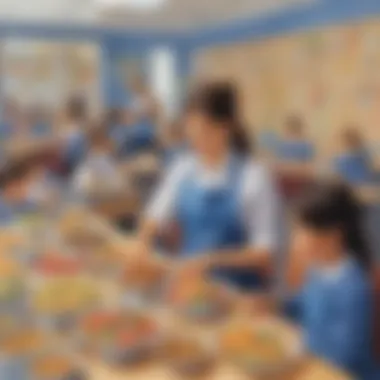
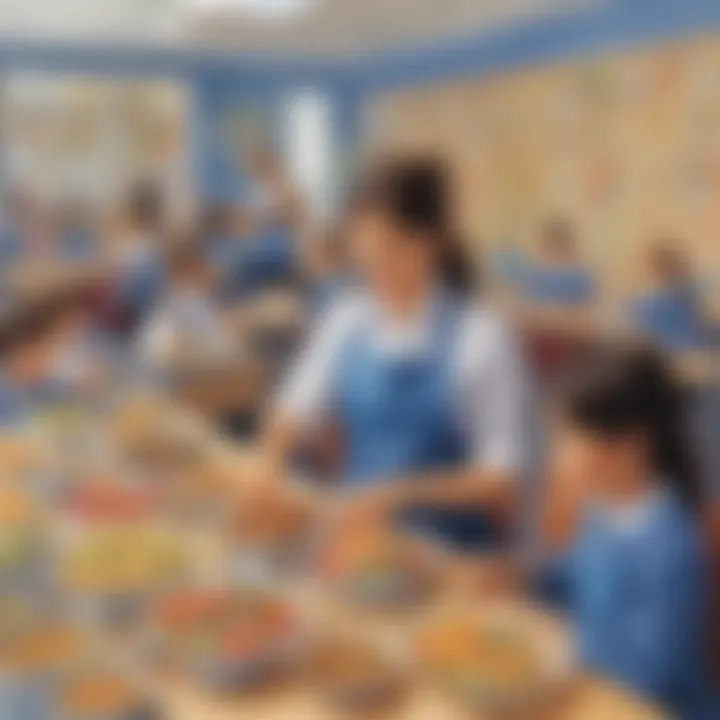
- Strong Listening Skills: They often pick up on details just from listening, sometimes even more than when reading.
- Preference for Verbal Communication: Instructions given verbally are usually understood better compared to written ones.
- Ability to Remember Information: They might find it easier to recall facts if they’ve heard them in a conversation or presentation, rather than reading about them.
Supporting these learners means recognizing their need for auditory input and creating opportunities to engage their listening skills. It’s not just about finding the proper teaching methods; it's also about fostering an environment that respects their unique learning preferences.
Engagement Techniques for Auditory Learners
When it comes to teaching auditory learners, there are various strategies that can help keep them engaged and enhance their learning experience. Here are some effective techniques:
- Incorporate Discussions: Small group discussions or partner work allow these learners to vocalize their thoughts, hear different perspectives, and deepen their understanding.
- Use Music and Sounds: Integrating themes or lessons with music can increase retention. Even background sounds can create a conducive learning atmosphere.
- Leverage Technology: Audiobooks, podcasts, and educational videos are excellent resources for auditory learners. For instance, having students listen to a podcast related to their subject material can spark interest and retention.
- Create Rhymes or Songs: Associating facts with jingles or rhythms helps in committing that information to memory, making learning more enjoyable.
Using these techniques can help forge a stronger connection between the material and the auditory learners, making lessons Not just instructional but also accessible.
Examples in Educational Settings
Real-world applications of the auditory learning style can be found across various educational contexts. Here are some illustrative cases:
- Storytelling Sessions: In elementary classrooms, teachers often read stories aloud, which captures the attention of auditory learners and helps them visualize content through sound.
- Oral Presentations: Encouraging students to share what they’ve learned through oral reports can deepen their understanding. They engage creatively and build confidence in expressing their thoughts.
- Debates and Discussions: Schools introducing debate clubs or discussion-based classes allow learners to articulate their opinions and listen actively, thereby sharpening their reasoning skills.
- Language Learning through Listening: In foreign language classes, listening to dialogues or conversations exposes students to authentic accents and vocabulary usage, which auditory learners find especially relevant.
In summary, by tapping into the auditory learning style, educators can create a dynamic and interactive environment that helps students thrive. It’s not just about teaching but about understanding how each student best absorbs information and applying that knowledge accordingly.
"Understanding different learning styles transforms the educational experience, ensuring every student has the opportunity to shine in their unique way."
Embracing this flexible approach encourages a diverse learning environment that recognizes and celebrates individual differences.
Kinesthetic Learning Style
The kinesthetic learning style is a significant aspect of understanding diverse educational methods. This style prioritizes learning through movement and hands-on experience. It's not just about sitting still and absorbing information; it's about engaging physically with the material. Kinesthetic learners tend to thrive in environments where they can manipulate objects, engage in physical activities, and apply what they learn in real-world settings. This approach caters to their natural instincts that urge them to touch, move, and experiment.
Emphasizing kinesthetic learning has numerous benefits. Firstly, it caters to students who may find traditional educational methods less effective, as they often struggle to focus or retain information through passive learning. Incorporating physical activities into lessons can enhance their engagement and improve comprehension, thus fostering a more inclusive educational environment.
Additionally, engaging kinesthetic learners can improve retention rates, boost motivation, and encourage teamwork. Teachers who adapt their strategies to include physical activities often note a marked increase in student participation and overall classroom dynamics. Understanding the unique needs of these learners is essential for creating a well-rounded educational approach.
Identifying Kinesthetic Learners
Recognizing kinesthetic learners in a classroom can sometimes feel like finding a needle in a haystack. They might stand out during activities where movement is involved, showing a preference for tactile experiences, but there are also subtler signs.
- Physical Movement: Kinesthetic learners often need to fidget or move while learning. If a child is constantly shifting in their seat during traditional lessons, they may benefit from more active engagement.
- Hands-On Interests: These students often demonstrate a strong preference for activities that involve building, crafting, or exploring. If a child spends more time engaged in physical play than book learning, this may be an indication of a kinesthetic learning preference.
- Memory Retention: Notice if a student recalls information best after performing a related activity. Kinesthetic learners might remember concepts better after they’ve created a model or acted out a scenario.
Being aware of these characteristics allows educators to tailor their approaches, thereby creating a more supportive learning environment.
Implementing Hands-On Activities
Creating an engaging classroom for kinesthetic learners hinges on hands-on activities. These activities not only help students absorb lessons but also invigorate the learning process through creativity and exploration.
Some effective strategies include:
- Experiential Learning: This can include science experiments, where students put theories into practice. For instance, mixing baking soda and vinegar not only teaches chemical reactions but also gets students excited about discovery.
- Role-Playing: In history classes, students can reenact historical events or assume roles of significant figures. Such activities enable learners to immerse themselves in the subject matter, making it more relatable.
- Learning Stations: Setting up various stations that focus on different learning activities—like puzzles, manipulatives, arts and crafts related to the curriculum—can captivate kinesthetic learners. This transforms the classroom into an interactive learning space that keeps students engaged.
Overall, integrating kinesthetic activities into lesson plans can foster a vibrant learning atmosphere that caters to varied preferences, ultimately enhancing retention and enthusiasm for learning.
Real-Life Examples of Kinesthetic Learning
Kinesthetic learning can be as practical as it gets, often mimicking scenarios students might encounter in real life. Here are some illustrative examples:
- Field Trips: Visiting farms, museums, or science centers allows students to experience lessons firsthand. Walking through a historical site as opposed to just reading about it reinforces their learning with sensory details.
- Sports and Movement Games: Incorporating physical games that require teamwork can teach strategic thinking and coordination, all while keeping students physically active. For example, relaying educational facts through a relay race can engage kinesthetic learners thoroughly.
- Gardening Projects: Involving students in gardening teaches them about biology and ecology in a tactile way. They learn the life cycle of plants through direct interaction, which boosts engagement and connection to the material.
"Taking students out of conventional learning environments and allowing them to experience lessons physically often uncovers skills they never knew they had."
Through these real-life examples, educators can see the immense value in kinesthetic learning. It's about transforming theoretical knowledge into applicable skills, ensuring students grasp concepts deeply and enjoy the learning process.
Reading/Writing Learning Style
The reading/writing learning style is instrumental in shaping how students absorb and process information. For those who lean towards this style, the written word takes precedence. They often exhibit a strong affinity for literature, note-taking, reading assignments, and written conversations. Understanding the implications of this learning style helps educators effectively cater to these students’ needs, ultimately creating a more enriched educational experience. By focusing on language as a primary medium, we can engage these learners in ways that are both creative and constructive.
Characteristics of Reading/Writing Learners
Reading/writing learners typically showcase distinct characteristics. They may prefer to skim through textbooks rather than engage with audiovisual material. Here are some of their common traits:
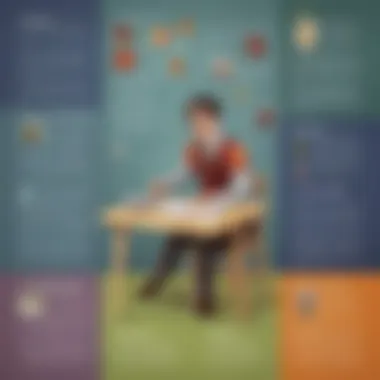

- Preference for Reading: They derive pleasure from reading books, articles, or essays, often preferring text-heavy resources.
- Strong Focus on Writing: These learners excel in writing tasks, such as essays or reports, and often express themselves better in writing than verbally.
- Note-Takers: They take meticulous notes and often paraphrase content to enhance understanding.
- Logical Sequencing: They appreciate well-organized content and are likely to learn better when information is structured clearly.
- Imaginative Thinking: Their creativity often shines through in storytelling and descriptive writing.
Strategies for Facilitating Reading/Writing
To enhance the learning experiences of reading/writing learners, specific strategies can be employed. Here are techniques educators should consider:
- Incorporate Writing Assignments: Encourage students to express their thoughts through essays, reports, and journals, fostering a connection with the material.
- Provide Reading Materials: Offer a range of reading materials, including novels, articles, and research papers that cater to various interests.
- Use Graphic Organizers: Tools like mind maps or outlines can help structure their thoughts and ideas before diving into writing tasks.
- Encourage Note-Taking: Teaching effective note-taking techniques can help reinforce learning while also enabling these students to synthesize information.
- Encourage Book Clubs: Establishing reading groups can promote discussion and critical thinking around texts, allowing students to engage more deeply.
Examples in Written Assignments
In practical applications, various written assignments can support reading/writing learners. Here are some notable examples:
- Literature Reviews: Students can review and analyze literary works, focusing on themes, characters, and stylistic choices.
- Creative Writing Projects: Assignments that encourage storytelling or poetry composition give students an opportunity to flex their creative muscles.
- Research Papers: By requiring students to gather and synthesize information from different sources, these projects enhance both their research and writing skills.
- Reflective Journals: Keeping a journal allows for personal expression and self-reflection, making learning more meaningful.
With reading/writing learners, fostering an appreciation for the written word serves not just their academic growth, but also nurtures their lifelong learning habits.
Engaging students through reading and writing doesn't only cater to their preferences but opens doors for them to express their understanding in ways that resonate deeply. By leveraging these strategies, educators can unlock greater potential, making the classroom a vibrant space for intellectual exploration.
Social Learning Style
Social learning style is a significant aspect of how individuals absorb information and interact with their peers. It emphasizes learning through social interactions, where students derive much from discussions and collaborations. This style underscores the importance of communication, teamwork, and shared experiences in education. By understanding social learning, educators can harness these dynamics to create more engaging and effective lessons that resonate with their students. Not only does this approach cater to the preferences of many learners, but it also fosters a positive classroom ecosystem by encouraging collaboration and respect among peers.
Identifying Social Learning Preferences
Recognizing social learning preferences is essential for educators aiming to create conducive learning environments. Students with a strong social learning preference often thrive in collaborative situations. They enjoy discussions, group projects, and interactive activities. Here are some characteristics to identify social learners:
- Collaboration Enthusiasts: They prefer teamwork and often seek help from classmates.
- Talkative Nature: They regularly engage in conversations, sharing thoughts and ideas.
- Observational Learning: They learn well by watching others and imitating positive behaviors.
- Empathetic Approach: They express concern for peers and tend to provide support to fellow students.
By observing these traits, teachers can tailor their instructional methods, ensuring inclusivity for social learners.
Group Activities and Collaborations
Creating opportunities for group activities is vital in harnessing the potential of social learners. These activities not only aid in knowledge retention but also build essential skills like communication, negotiation, and teamwork. Here are some effective strategies for implementing group activities:
- Group Projects: Assign projects where students must collaborate to achieve a common goal. This encourages the sharing of diverse thoughts and problem-solving approaches.
- Discussion Circles: Create a format where students can freely express their ideas about a specific topic. This fosters a respectful dialogue and broadens understanding.
- Peer Teaching: Let students take turns teaching each other. This reinforces their own understanding and boosts their confidence.
- Brainstorming Sessions: Engage groups in idea generation around a topic, allowing everyone to contribute and learn from one another's perspectives.
Group activities not only enhance learning but also cultivate social bonds that can benefit students throughout their educational journeys.
Practical Examples of Social Learning
Incorporating practical examples helps solidify the concept of social learning in various educational settings. Consider the following:
- Science Fair Projects: Students can collaborate in small teams to prepare presentations on different topics, allowing them to pool their talents and resources while encouraging excitement about science.
- Literature Circle: In this setup, each student reads the same book but occupies different roles in the group, such as the summarizer or the questioner. This promotes accountability and deeper understanding of the content.
- Classroom Debates: Organizing debates on relevant subjects can foster critical thinking and improve communication skills while also allowing students to engage with differing viewpoints.
- Community Service Projects: These initiatives not only benefit the community but also provide students with opportunities to work together on meaningful tasks, strengthening their bonds and enhancing their sense of responsibility.
"Learning is not a spectator sport."
— D. W. Brooks
Solitary Learning Style
Understanding the solitary learning style is crucial to ensuring that education is inclusive and caters to the diverse needs of students. This style revolves around learners who thrive in environments where they can engage in self-directed study and reflection. Recognizing the traits and behaviors of solitary learners can help educators foster spaces that maximize their potential. Not every child learns best in communal or social settings; some find clarity and focus when they can dive deep into their thoughts, away from distractions.
Understanding Solitary Learners
Solitary learners are often characterized by a desire for independence in their learning process. They tend to work best when they can control their environment, pace, and method of study. These individuals might prefer to learn in quiet spaces with minimal interruptions. Some may exhibit traits like:
- Strong preferences for reading or writing as a study method.
- An inclination to engage in research and self-exploration.
- Difficulty concentrating in group settings, which might lead to frustration.
- A reflective nature, often needing time to think through concepts comprehensively.
Such a style does not imply these learners are anti-social; rather, it means they find confidence and understanding in solitude. They may excel in tasks that allow for deep thinking, problem-solving, and creativity.
Independent Study Techniques
For solitary learners, study techniques that emphasize organization and self-discipline are essential. Here are several methods that can nurture their independence:
- Structured Journaling: Writing reflections or summaries can help consolidate understanding and enhance critical thinking.
- Personalized Reading Lists: Allowing choices in reading material can engage them more fully in topics of personal interest.
- Setting Goals: Encouraging learners to set personal learning objectives can foster ownership of their study journey.
- Mind Mapping: This visual organization helps solitary learners connect ideas, enhancing comprehension and recall.
- Online Courses: Utilizing platforms that offer independent learning modules can provide flexibility to progress at their own pace.
By implementing these techniques, educators and parents can better support solitary learners in developing effective study habits and maintaining motivation.
Examples of Solitary Learning Environments
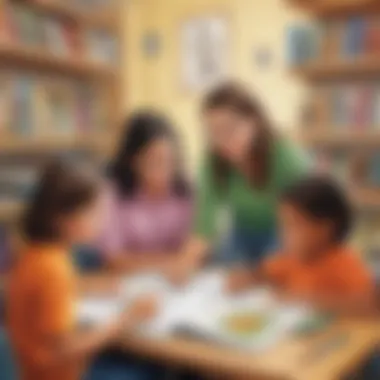
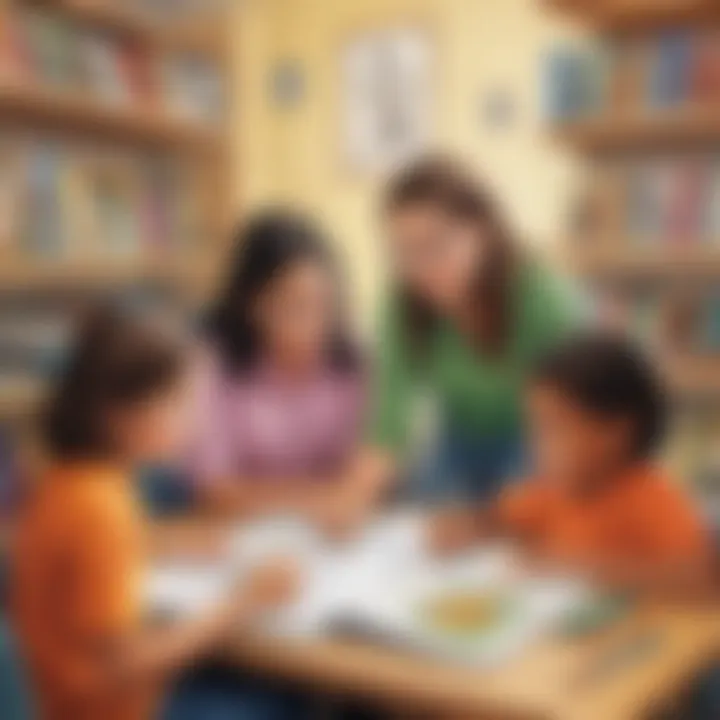
Creating an environment conducive to solitary learning is key. Here are a few examples of spaces or approaches:
- Quiet Corners in Classrooms: Designate areas with comfortable seating and minimal distractions for focused study.
- Library Retreats: Libraries can serve as ideal solitary learning environments where students can immerse themselves in resources quietly.
- Home Study Nooks: Encouraging parents to set up a designated study area at home can help children associate this space with focused learning.
- Virtual Learning Environments: Platforms like Khan Academy or Coursera allow self-paced learning in subjects of interest.
Engaging solitary learners in thoughtfully designed environments allows them to flourish, ensuring that their educational experiences are both enriching and fulfilling. To summarize, acknowledging the solitary learning style opens doors to broader educational strategies that can cater effectively to every student's individual journey.
"Every learner has a rhythm; it's about fine-tuning the approach to dance with their unique beat."
Empowering solitary learners through understanding and practical application benefits not only their academic performance but also their overall well-being. When thoughtfully considered, such approaches can create a richer, more diversified educational experience for all.
Practical Applications for Educators
The heart of education lies not just in understanding diverse learning styles but in the practical application of this knowledge within the classroom. For educators, recognizing and addressing these styles can change the game. It’s not simply about delivering information; it’s about connecting with each student in a way that resonates personally with them. By implementing tailored strategies based on specific learning preferences, educators can foster an environment where every student has the chance to thrive.
Assessing Learning Styles in the Classroom
Identifying and assessing students' learning styles is crucial for creating a responsive educational environment. Simple assessments, through observation or structured inventory methods, can help teachers understand which styles predominate in their classrooms. For example, observational checklists can assist in discern whether students engage more when working with concrete objects, listening to lectures, or discussing topics in groups.
Key considerations for assessing learning styles include:
- Diversity in Assessment Methods: Use varied tools, like quizzes or interviews, to capture the breadth of learning preferences, avoiding a one-size-fits-all approach.
- Continuous Observation: Learning styles may shift over time or with different subjects, so regular observation is necessary.
- Engagement Feedback: After implementing strategies, gather students’ feedback to gauge their engagement and understanding.
By working through these assessments, teachers can tailor their lessons, crafting experiences that appeal to visual, auditory, and kinesthetic learners alike.
Creating a Multimodal Learning Environment
To cater to the diverse needs of learners, educators should aim for a multimodal approach. This involves blending various instructional methods to reach students with different preferences. For instance, a lesson on climate change can be delivered through engaging visuals, interactive discussions, and hands-on experiments. Not only does this keep students interested, but it also reinforces the material through multiple channels.
Some effective strategies for a multimodal environment are:
- Incorporating Technology: Utilize digital tools like video presentations for visual learners and podcasts for auditory learners.
- Designing Flexible Spaces: Arrange classrooms with different stations for reading, group work, and hands-on activities.
- Promoting Collaboration: Encourage group projects that allow students to contribute based on their strengths, whether it’s writing, presenting, or building a model.
A multimodal approach not only enriches learning but also fosters a sense of community and engagement among students.
Future of Learning Styles in Education
The future of learning styles in education stands as a pivotal concept shaping how we perceive and engage with students’ diverse learning needs. As we step into an era where technology transforms traditional methods, understanding and integrating varied learning preferences becomes essential. Not only does this approach enrich the learning environment, but it also ensures that every child has the opportunity to shine based on their unique attributes. With ongoing research and educational practices evolving, it’s clear that adaptability is key.
Emerging Trends and Technologies
Keeping up with current trends and technologies offers educators a rich landscape to tailor their teaching strategies effectively. One prominent trend is the use of adaptive learning technologies. These systems analyze students’ responses and adjust the content accordingly. For instance, platforms like Khan Academy employ algorithms to personalize learning experiences, providing extra practice on concepts students struggle with.
Moreover, educational apps have gained immense traction. Apps such as Duolingo, which utilizes gamification, cater specifically to auditory and visual learners by integrating sound and visuals into language learning. This innovation exemplifies a growing understanding that technology can meet individual learning preferences head-on.
"To truly embrace the future, educators must be willing to explore and implement these emerging technologies in meaningful ways."
Additionally, artificial intelligence (AI) is making waves. AI can help in identifying the predominant learning styles of students, thus allowing tailored educational paths. By recognizing a student’s behavioral patterns, AI might suggest the most effective learning materials. Imagine a classroom where, based on observations, an AI suggests using more hands-on projects for kinesthetic learners or audio resources for auditory learners.
Implications for Curriculum Development
Incorporating diverse learning styles into curriculum development speaks volumes about an educator’s commitment to inclusivity. A curriculum that embraces different learning styles not only addresses the academic needs of students but also enhances self-esteem, motivation, and engagement. One of the main implications here is the necessity for multimodal instruction. This method combines various teaching modalities—visual, auditory, and kinesthetic—to cater to all learners. For example, when teaching the water cycle, an educator could incorporate diagrams, videos, and physical models, creating a rich tapestry of resources for exploration.
Further, curriculum development should actively involve feedback from diverse learner demographics. Engaging students in discussions about their preferred learning experiences, through surveys or reflection activities, ensures that their voices are heard. For instance, a student who thrives on group work might suggest more collaborative projects in science classes.
Finally, keeping an eye on cultural relevance within learning styles is crucial. Different cultures may have unique approaches to education, and recognizing these can help craft a curriculum that resonates with all students. This kind of curriculum not only educates but empowers students to connect personally with their learning, ultimately leading to a more enriching educational experience.
In summary, the future of learning styles in education invites educators to be pioneers in creating dynamic learning environments. The blend of emerging trends, coupled with thoughtful curriculum development, paves the way for a more inclusive, adaptive, and effective educational landscape.
Epilogue
The conclusion serves as a vital component of this exploration into diverse learning styles, wrapping up the insights and findings discussed throughout the article. It's not merely about summarizing the elements of learning styles; it's about underscoring the significance of recognizing and accommodating these varying preferences in real educational contexts. The importance cannot be overstated, as it paves the way for personalized learning experiences that align better with how each student absorbs information.
Recap of Learning Styles and Their Importance
As we’ve surveyed in previous sections, learning styles encompass a spectrum of preferences among students, from visual and auditory to kinesthetic and social modalities. These styles represent the unique ways individuals engage with educational material, transforming the often one-size-fits-all approach of traditional teaching into a more tailored and effective strategy.
- Personalized Education: Recognizing that no two students are identical allows educators to design customized lesson plans that cater to individual needs. This personalization can lead to heightened engagement and improved outcomes.
- Inclusivity in Learning: Emphasizing learning styles not only benefits individual students but also promotes inclusivity within the classroom. By adapting teaching methods to accommodate diverse learning preferences, we create an environment where every child feels valued and capable of succeeding.
- Skill Development: Understanding these styles equips both educators and parents with tools to foster critical skills. This awareness helps in equipping future generations with the ability to adapt to various scenarios, thrive in collaborative efforts, and develop a love for learning that extends beyond the classroom.
"Teaching is not about the subject taught but about the student learning."
In a changing educational landscape, learning styles also inform ongoing curriculum development, engagement techniques, and broader educational philosophies. The discourse around these styles continues to evolve, prompting educators to remain vigilant and flexible. Ultimately, an awareness of diverse learning preferences isn't just a trend—it's a necessary shift towards developing well-rounded individuals capable of navigating a complex world.
By integrating a profound understanding of learning styles into everyday teaching practices, educators can foster an atmosphere where curiosity flourishes and academic success becomes an achievable reality for every student.







